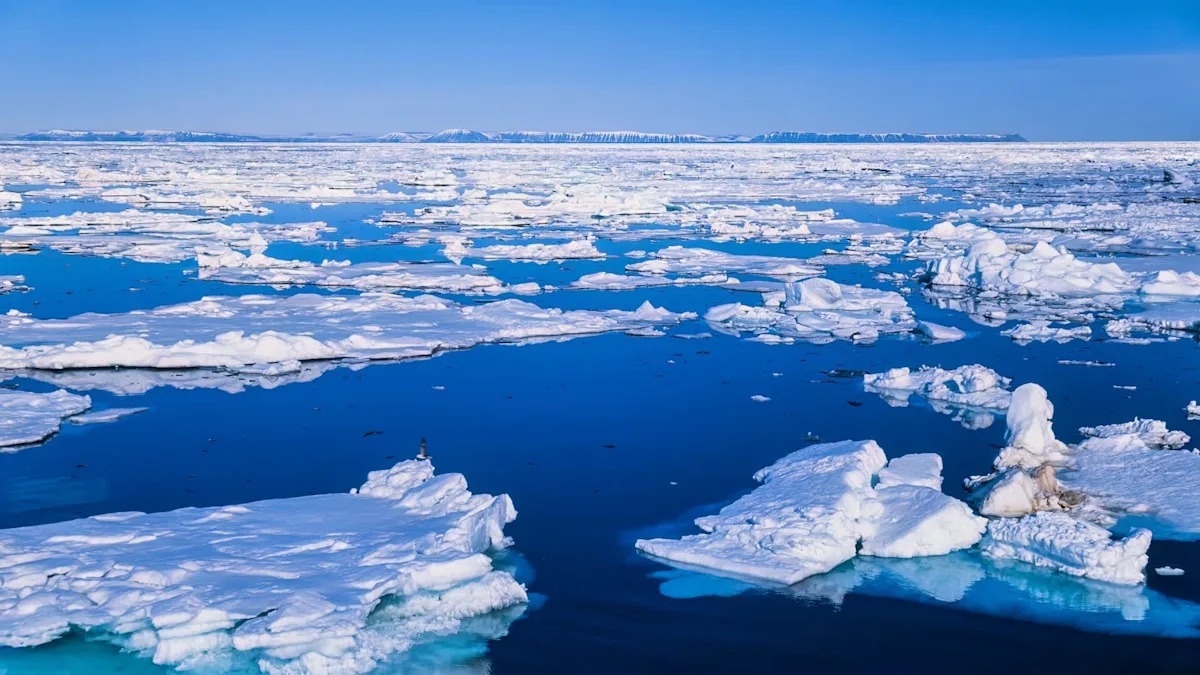In a recent study, researchers explored 30,000 years of changes in sea ice in the Arctic Ocean. Their findings — which made use of cosmic dust buried in the seafloor — could help scientists understand the implications of Arctic sea ice melting today and into the future.
What’s happening?
As The New York Times reported, the scientists analyzed Arctic Ocean sediment samples in a search for space particles. These particles essentially fall from space at a steady rate and deposit in layers on the ocean floor when there is no sea ice to block their path. The absence of the particles in seafloor sediments indicates when and where in Earth’s history there was sea ice above.
The researchers found that, historically, Arctic sea ice coverage responded to atmospheric conditions as well as ocean temperature changes.
Less sea ice also means more open water and more light passing into the water. The scientists compared the cosmic-dust records to records of nutrient uptake by organisms depositing shells in the seafloor, as a university report about the research summarized.
In addition to providing information about historical sea ice, the research raised questions about the long-term health of Arctic ecosystems as sea ice melts in a rapidly warming world.
Why are Arctic sea ice studies important?
This Arctic study is significant because it helps us understand how the region has responded to changing climate conditions over long periods — and how sea ice melting might affect people and the planet in the future. Satellites only started measuring sea ice coverage about 50 years ago, and this study takes us back approximately 30,000 years, as the Times detailed.
Scientists also consider the Arctic a barometer for broader climate shifts, and this new study adds depth and additional insights to that indicator. The study emphasized that the Arctic is warming faster than other parts of the planet. And sea ice loss is amplifying warming trends more broadly.
What’s happening in the Arctic has ripple effects throughout marine ecosystems and food security for populations worldwide. When we understand how Arctic systems have behaved in the past under different conditions, we can better gauge the severity of potential future climate shifts.
“If we can project the timing and spatial patterns of ice coverage decline in the future, it will help us understand warming, predict changes to food webs and fishing, and prepare for geopolitical shifts,” said lead author Frankie Pavia in the university report.
In short, the cosmic dust from this study helps us understand past changes and helps us predict the future of our world.
What’s being done about Arctic sea ice melt?
The researchers recommended taking additional samples to enhance our understanding of sea ice, its further melt, and changing Arctic ecosystems. What they accomplished in this particular study is one piece of the puzzle in how our planet is changing.
“It’s like a big equation with many unknowns, and now you can tackle more of them,” said Walter Geibert, a marine geochemist quoted by the Times who was not involved in the research.
Meanwhile, other scientists are also conducting climate-relevant studies in the Arctic and on the ocean floor. All of this vital work contributes to our understanding of how our planet is evolving due to human activity.
As an individual, you can help raise awareness about these critical issues by sharing with others and taking personal steps to become more resilient to extreme weather.
For example, lifestyle upgrades like installing solar panels on your home can save you money on power bills and send a message to people you know about sustainability and the importance of caring for our planet. If you’re interested in going solar, TCD’s Solar Explorer can help you save up to $10,000 on your solar installation through trusted, local installers.
Actions you take to help yourself become more resilient and save money on rising energy costs can also benefit the planet.

��
Get TCD’s free newsletters for easy tips to save more, waste less, and make smarter choices — and earn up to $5,000 toward clean upgrades in TCD’s exclusive Rewards Club.

